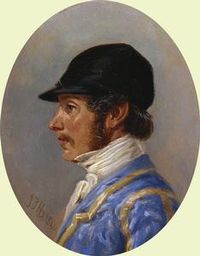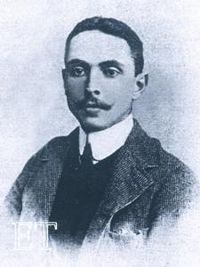| Representative peer | Elected | Ceased |
|---|
| John Lindsay, 19th Earl of Crawford | 13 February 1707 | 21 September 1710 |
| David Boyle, 1st Earl of Glasgow | 13 February 1707 | 21 September 1710 |
| Archibald Campbell, 1st Earl of Ilay (1st time) | 13 February 1707 | 8 August 1713 |
| David Leslie, 3rd Earl of Leven | 13 February 1707 | 21 September 1710 |
| William Kerr, 2nd Marquess of Lothian | 13 February 1707 | 3 February 1709 |
| Hugh Campbell, 3rd Earl of Loudoun | 13 February 1707 | 20 November 1731 |
| John Erskine, Earl of Mar | 13 February 1707 | 5 January 1715 |
| James Graham, 1st Duke of Montrose | 13 February 1707 | 21 September 1710 |
| James Douglas, 2nd Duke of Queensberry (Peerage) | 13 February 1707 | 15 April 1708 |
| Archibald Primrose, 1st Earl of Rosebery | 13 February 1707 | 5 January 1715 |
| John Ker, 1st Duke of Roxburghe | 13 February 1707 | 21 September 1710 |
| James Ogilvy, 1st Earl of Seafield (1st time) | 13 February 1707 | 21 September 1710 |
| John Dalrymple, 2nd Earl of Stair (1st time) | 13 February 1707 | 15 April 1708 |
| John Gordon, 16th Earl of Sutherland | 13 February 1707 | 15 April 1708 |
| John Hay, 2nd Marquess of Tweeddale | 13 February 1707 | 15 April 1708 |
| David Wemyss, 4th Earl of Wemyss | 13 February 1707 | 21 September 1710 |
| James Hamilton, 4th Duke of Hamilton [note 1] | 17 June 1708 | 15 November 1712 |
| David Carnegie, 4th Earl of Northesk | 17 June 1708 | 5 January 1715 |
| George Hamilton, 1st Earl of Orkney | 17 June 1708 | 29 January 1737 |
| John Hamilton-Leslie, 9th Earl of Rothes | 17 June 1708 | 21 September 1710 |
| William Johnstone, 1st Marquess of Annandale (1st time) | 3 February 1709 | 8 August 1713 |
| John Murray, 1st Duke of Atholl | 10 November 1710 | 5 January 1715 |
| John Elphinstone, 4th Lord Balmerino | 10 November 1710 | 5 January 1715 |
| Walter Stuart, 6th Lord Blantyre | 10 November 1710 | 23 June 1713 |
| Alexander Montgomerie, 9th Earl of Eglinton | 10 November 1710 | 5 January 1715 |
| Alexander Home, 7th Earl of Home | 10 November 1710 | 8 August 1713 |
| William Livingston, 3rd Viscount of Kilsyth | 10 November 1710 | 5 January 1715 |
| Thomas Hay, 7th Earl of Kinnoull | 10 November 1710 | 5 January 1715 |
| William Keith, 9th Earl Marischal | 10 November 1710 | 27 May 1712 |
| James Ogilvy, 1st Earl of Seafield (2nd time) | 14 August 1712 | 5 January 1715 |
| James Livingston, 5th Earl of Linlithgow | 13 January 1713 | 8 October 1713 |
| John Campbell, 1st Earl of Breadalbane and Holland | 8 October 1713 | 5 January 1715 |
| John Cochrane, 4th Earl of Dundonald | 8 October 1713 | 5 January 1715 |
| John Murray, 2nd Earl of Dunmore (1st time) | 8 October 1713 | 5 January 1715 |
| David Colyear, 1st Earl of Portmore | 8 October 1713 | 5 January 1715 |
| Charles Douglas, 2nd Earl of Selkirk (1st time) | 8 October 1713 | 5 January 1715 |
| William Johnstone, 1st Marquess of Annandale (2nd time) | 3 March 1715 | 14 January 1721 |
| John Hamilton, 3rd Lord Belhaven and Stenton | 3 March 1715 | 27 November 1721 |
| David Erskine, 9th Earl of Buchan | 3 March 1715 | 17 April 1734 |
| James Stuart, 2nd Earl of Bute | 3 March 1715 | 28 January 1723 |
| Henry Scott, 1st Earl of Deloraine | 3 March 1715 | 25 December 1730 |
| Archibald Campbell, 1st Earl of Ilay (2nd time) | 3 March 1715 | 20 March 1761 |
| William Ross, 12th Lord Ross | 3 March 1715 | 10 March 1722 |
| John Dalrymple, 2nd Earl of Stair (2nd time) | 3 March 1715 | 17 April 1734 |
| John Sutherland, 16th Earl of Sutherland | 3 March 1715 | 27 June 1733 |
| Charles Hay, 3rd Marquess of Tweeddale | 3 March 1715 | 17 December 1715 |
| Thomas Hamilton, 6th Earl of Haddington | 28 February 1716 | 17 April 1734 |
| William Gordon, 2nd Earl of Aberdeen | 1 June 1721 | 5 August 1727 |
| Charles Hope, 1st Earl of Hopetoun | 21 April 1722 | 26 February 1742 |
| Charles Douglas, 2nd Earl of Selkirk (2nd time) | 21 April 1722 | 13 March 1739 |
| John Hay, 4th Marquess of Tweeddale (2nd time) | 21 April 1722 | 17 April 1734 |
| James Ogilvy, 1st Earl of Seafield (3rd time) | 15 August 1722 | 19 August 1730 |
| John Leslie, 10th Earl of Rothes (1st time) | 13 June 1723 | 17 April 1734 |
| John Murray, 2nd Earl of Dunmore (2nd time) | 20 September 1727 | 18 April 1752 |
| Alexander Hume-Campbell, 2nd Earl of Marchmont | 20 September 1727 | 17 April 1734 |
| William Kerr, 3rd Marquess of Lothian | 19 February 1730 | 20 March 1761 |
| George Douglas, 13th Earl of Morton | 17 November 1730 | 4 January 1738 |
| John Lindsay, 20th Earl of Crawford | 28 January 1732 | 24 December 1749 |
| James Murray, 2nd Duke of Atholl | 21 September 1733 | 27 April 1741 |
| Alexander Lindsay, 4th Earl of Balcarres | 4 June 1734 | 25 July 1736 |
| Francis Scott, 2nd Duke of Buccleuch | 4 June 1734 | 27 April 1741 |
| Charles Cathcart, 8th Lord Cathcart | 4 June 1734 | 20 December 1740 |
| James Ogilvy, 5th Earl of Findlater | 4 June 1734 | 20 March 1761 |
| John Campbell, 4th Earl of Loudoun | 4 June 1734 | 27 April 1782 |
| Charles Colyear, 2nd Earl of Portmore | 4 June 1734 | 18 June 1747 |
| William Sutherland, 17th Earl of Sutherland | 4 June 1734 | 18 June 1747 |
| John Campbell, 2nd Earl of Breadalbane and Holland | 22 October 1736 | 18 June 1747 |
| John Stuart, 3rd Earl of Bute (1st time) | 14 April 1737 | 27 April 1741 |
| John Carmichael, 3rd Earl of Hyndford (1st time) | 14 March 1738 | 20 March 1761 |
| James Douglas, 14th Earl of Morton | 12 May 1739 | 12 October 1768 |
| William Home, 8th Earl of Home | 13 June 1741 | 28 April 1761 |
| Charles Maitland, 6th Earl of Lauderdale | 13 June 1741 | 15 July 1744 |
| James Stuart, 8th Earl of Moray | 13 June 1741 | 5 July 1767 |
| James Somerville, 13th Lord Somerville | 13 June 1741 | 18 June 1747 |
| John Hay, 4th Marquess of Tweeddale (1st time) | 30 April 1742 | 9 December 1762 |
| John Dalrymple, 2nd Earl of Stair (3rd time) | 12 October 1744 | 9 May 1747 |
| George Gordon, 3rd Earl of Aberdeen (1st time) | 1 August 1747 | 20 March 1761 |
| Cosmo Gordon, 3rd Duke of Gordon | 1 August 1747 | 5 August 1752 |
| James Maitland, 7th Earl of Lauderdale (1st time) | 1 August 1747 | 20 March 1761 |
| Alexander Leslie, 5th Earl of Leven | 1 August 1747 | 8 April 1754 |
| John Leslie, 10th Earl of Rothes (2nd time) | 1 August 1747 | 10 December 1767 |
|






















